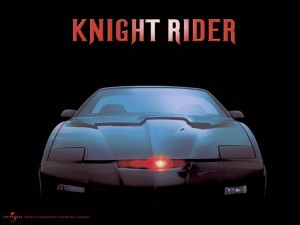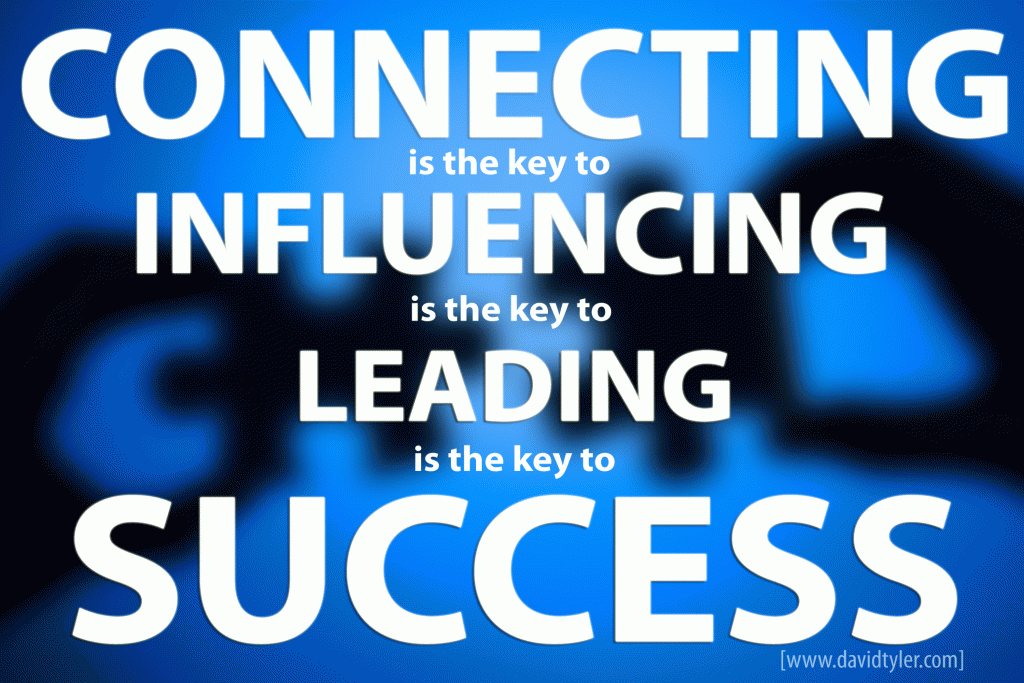
by David Tyler | Jan 6, 2016 | Art of Communicating Ideas, Marketing, Media Relations, PR, Public Relations

I was recently asked to help a non profit organization create a public relations action plan that they could implement on their own without the use of a PR firm.
Here’s what we did.
There are 2 distinct stages to creating a public relations action plan
- setting the groundwork and
- executing the plan
Stage 1 – Setting the Groundwork
There are 7 steps to building the foundation to your public relations action plan. Do not skip any step or do it only halfway. All of the organization’s leaders need to be involved in this stage in order to come to an unambiguous foundation to build on. I suggest a meeting dedicated to this one task.
1.Who Are You Talking To?
First, define who your end audience is, that is to say who the press will be talking to on your behalf. This will help guide the way you personalize your message. In the case of the non profit organization that I developed the plan for it was two fold: (a) the current members and (b) the members of the general public. The messages they send out to both groups isn’t always the same.
2. What’s Your Message?
Establish the message that you’re trying to disseminate. I know it sounds counter intuitive but don’t talk about your non profit organization, talk about what it does for the community. Your message should serve the needs of your audience…not your non profit organization.
3.Define Your Goal
Define the goal for your public relations efforts. What are you expecting to happen, what will your organization gain? New members? Stronger community ties?
4.Define Your Method
How will you connect with your audience? Press releases aren’t enough, you need to also consider (a) holding open houses for the press to let them meet your organization members and learn more about you, (b) press conferences to make major announcements, maybe even (c) set-up a YouTube channel and start creating video content to get your message out. Plus, it goes without saying that you’ll need to have a website.
5.Assemble Your Press Kit
It doesn’t matter what kind of public relations you’re doing you must have a digital press kit, with high resolution photographs (300dpi) of the leaders of your group and/or your group doing their activity along with documents that explain your organization and its mission. This will need to be on hand to give out at a moments notice. I would also suggest having hard copies of your press kit to hand out but in todays digital age you will use them less often.
6.Who Are Your Media Contacts
Create a list of all the media contacts relevant to your message (print, TV and radio), in your geographic region. These can be purchased. Keep this list updated and refined. For example, if your non profit organization is dedicated to classic cars, don’t include a contact for a local cooking TV show. Also, if one of your media contacts leaves find out who has replaced them and if phone numbers or email addresses change update your info. There’s nothing worse than a list that’s gone “stale” when you have something to announce. Keep your list fresh.
7.Assign A Contact Person
Once you have established the above you’ll need to assign someone responsible for directly interacting with the media. They will need to be available for any media inquiries especially after a press release has been sent out, to co-ordinate interviews between the media and your group’s spokesperson and to set-up and host a press conference. When they are not available a back-up contact person should be assigned. Always keep the back-up contact person up to date.
Stage 2 – Putting the Action in your Action Plan
Once all of the above is in place, your contact person will need to reach out to everybody on the list to introduce themselves and your non profit organization in as brief a way as possible. Depending on the size of your list it may take a few weeks of phone calls and/or face-to-face meetings. Remember, first impressions are the lasting impressions when it comes to public relations.
Create a 12-month schedule of important dates for your organization that you want your audience to be aware of and plan events and/or announcements around those times. Do you do an annual oyster party…food drive? Put it on the calendar. Are you planning an open house? Put it on the calendar. Note: don’t put more on your calendar than your contact person will have time to dedicate to especially if they’re a volunteer or do this part time.
You’ll know your public relations action plan is working when the press call you for a quote on something going on in the news.
Plan a meeting to re-examine your public relations action plan and make any necessary adjustments once every 12-months.
Bottom Line
Before you can ask the media to do something for you, you need to be able to provide something for them…to become a resource for information relevant to their readers, viewers and listeners.
Be useful, be timely, be professional and you will receive the attention that your non profit organization deserves.
I look forward to answering your questions and comments below.
by David Tyler | Sep 10, 2015 | Advertising, Art of Communicating Ideas, Commercials, Copywriting, Emotional Marketing, Marketing Small Business, Radio, radio commercials, TV commercials, Writing

The path between a great idea and a great broadcast ready commercial is paved with excellent copy writing. Unfortunately, often times and at no fault of the copy writer, the message gets obscured because of the too-many-cooks principle.
If it was up to copy writers alone all commercials would be divine inspirations that communicate an idea clearly and effectively. However as you know there’s more to the process including well intentioned sales people, the clients themselves and don’t forget the client’s knowledgable hairdresser who believes the product name should be said at least 6 times in a :30 second commercial to be most effective!
If you’re a commercial copy writer and you’re looking for ammunition to pull out when all of the above “cooks” start trying to help make the commercial better, arm yourself with my 5 truths about commercial copy writing.
-
Commercials are meant to sell, not entertain
A successful commercial is not one that wins awards for it’s creativity or that’s funny, it’s one that motivates the listener to act. To go out and buy the product, period.
This should be your main goal as soon as you sit down to write and if it’s not you’re being unfaithful to the client’s needs.
-
Less is more
It’s not just a cliché. Retailers who buy commercial airtime sometimes think that they need to fill it with as much information about their product as they can possible squeeze in. You’ll need to explain to them that this approach works against the purpose of the commercial…stimulating an emotional response which then motivates the audience to act.
My friend Nick Michaels takes it a step further when he says, “The more words you use the LESS the listener gets to actively participate. Does your message allow for the act of discovery or is the listener a VICTIM of the message?”
The white space you leave between the words is where the audience gets to participate through introspection and inadvertently internalizes the message you’re trying to convey.
-
Advertising solves problems
Let’s be honest, people don’t care about the product, they care about what the product can do for them.
When you’re tasked with writing a commercial the first question you need to ask yourself is “what problem does it solve?” and then build a message that conveys that information to the listener in a meaningful way.
It’s a 3 step process:
Step 1 – Identify the need that will be filled or problem that will be solved
Step 2 – Make the listener aware of that need or problem
Step 3 – Show them how the product will solve that need or problem
-
One core message is all you need
More today than at any other time, your audience is busy living their lives and will only respond to a simple, crystal clear message that they can relate to.
If in your creative meeting you conclude that XYZ Money Lenders ‘will solve your money problems’ make that your core message and build the commercial backwards from there. Your core message is the bullseye of the entire commercial and the fact that their lineups are short, their staff is friendly or that they have 18 convenient locations, is not. Anything that is outside of your target will only confuse the message.
If the client insists on mentioning more than one core message suggest a separate commercial for each of them.
-
Radio is a visual medium
I’ve spent more years working in radio than in television but the truth is that building a picture in the mind of the listener and igniting introspection, is at the core of radio’s success. This is thoroughly explained in an article titled Visual Imagery: Applications to Advertising on the Association for Consumer Research website (quoted below).
[blockquote author=”John R. Rossiter, Columbia University”][Mental] imagery may prove to be the primary principle for the psychology of learning.[/blockquote]
From a practical (ie. budgetary) standpoint when you’re writing a radio commercial vs. TV commercial you have much more freedom to create than in TV. When you’re writing for radio use the medium to it’s fullest potential.
Conclusion: Commercial copy writing isn’t a lost art but it does sometimes get overlooked in the fast paced, day-to-day operations of connecting clients to consumers. I hope this list helps you do that in a way that benefits both you and your clients.
What would you add to my list? Leave your thoughts or commercial copy writing truths in the comment field below.

by David Tyler | Aug 10, 2015 | Art of Communicating Ideas, Audio Production, Branding, Radio, Radio Imaging, Writing

Admittedly, one of the hardest things for radio people to do is to listen to their radio station the way a listener listens, but it remains a crucial skill that broadcaster’s need to develop before they can properly brand their radio station.
For far too long radio programmers have thought they heard listeners say they wanted “Less Talk, More Rock”, yet that was an over simplification of what listeners were asking for from their radio station.
With radio’s ever increasing competition from satellite, streaming, and internet radio, not to mention a flotilla of other entertainment options like digital TV, home theater and video games, we have to better understand what listeners come to our stations for and echo that proposition in our imaging statement.
It doesn’t matter how hard you want to be “The Rock Station That REALLY Rocks”, if the audience doesn’t see you as being that then you will only be “The Rock Station That THINKS It Really Rocks”. Branding begins in the consumers mind so the first step to better branding is to understand how we are perceived.
What’s For Dinner
As an entertainment option, let’s try to understand why people turn to radio. Imagine this: You and your significant other go out to a restaurant for dinner with a couple of friends. What are you actually going out for, the food? Not necessarily. While the food is the object of the get together, it isn’t the reason for getting together, you want to talk, catch up and share stories. In the same way, your listeners are coming to you for the music (or information if you are a News/Talk station) but what’s making them stay and what compels them to come back time and time again? As I’ve said in other articles, songs (or information) are the bricks of this ‘radio house’ if you will, but what holds it all together is the mortar…what’s holding your ‘radio house’ together?
Better Radio Imaging Through Better Understanding
So how does all of this relate to imaging your radio station? As soon as you realize that the reason your listeners are listening to your radio station isn’t just for the music you’ll see that “Less Talk, More Rock” isn’t a very good way to brand yourself in fact it’s quite limiting. Saying that you play “10 Songs In A Row” or “100 Songs In A Row” for that matter, doesn’t cut it either. If that’s what they really want they’ll just plug into their iPod and get 1,000 songs in a row! It’s necessary to understand what makes your listener listen and then give them that wrapped up neatly in your imaging. If your audience’s understanding of what your station is doesn’t match yours then ask yourself why? Then decide if you should change your station or adjust your imaging to match your listener’s expectations.
Time to Rethink
Branding is an art that honestly, most radio people haven’t mastered yet. You need to capture your listener’s imagination while reflecting their perceptions. To help make my point I use this example often: if a radio person were in charge of coming up with the imaging statement for Coca-Cola it would be something like, “Your Favourite Blend of Sugar, Water and Artificial Coca Flavouring”. Uh, yeah, that’s what it is, but how is it perceived in the mind of the consumer? It’s seen as being the number one Cola on the market, they defined what all Cola’s are, Coca Cola was the first cola drink most of us ever experienced, which is why it is better branded as: “The Real Thing”.
-
- The Hudson’s Bay Company isn’t branded as “Cloths, Perfume, Kitchen Appliances and Furniture”, it’s branding statement is “More Than You Came For”
- Hewlett Packard is not “Printers” it’s imaging statement is “Invent”
- Bell Mobility isn’t “Cell Phones and Accessories” it’s “We Are All Connected”
- Microsoft isn’t “Computers”, it’s “Where Do You Want To Go Today”
Do you see how brand savvy companies have captured the spirit of how the consumer sees their product? So why would you brand your radio station as being the station that “Plays Your Favourites Of The 70’s 80’s, 90’s and Now”. It’s time to rethink the way you brand your radio station. Ask yourself, what is the unique proposition that you can offer a listener. Or better yet ask your listener what they think of your radio station.
Conclusion
While a perceptual study is a good idea I would never rely entirely on its outcome, the way they are done can be misleading. Remember it was a focus group that gave us “Less Talk, More Rock”… That being said listen to what your jocks are saying about the calls they get, at public events strike up a conversation with a listener or even hang around in the lobby and listen to what contest winners are saying about the station to your receptionist. You may be surprised at what you actually hear your listeners say about your station…because it won’t be about the food!
by David Tyler | Jul 27, 2015 | Advertising, Art of Communicating Ideas, Marketing, Marketing Small Business, Software, Technology

“Feelings, whoa, whoa, whoa, feelings….” as the Morris Albert song goes…are not always expressed in a meaningful way by everybody.
While it may not matter as much on an interpersonal level, when there are millions of advertising/marketing dollars on the line you may want a better understanding of consumer “feelings”.
For decades, advertising and marketing agencies have employed focus groups to help their clients better understand their customers. However, using the more traditional methods of collecting data isn’t always fool proof.
Today there is a way to take the guesswork out of interpreting focus group results using facial recognition software.
High Tech Answer
There are 2 primary companies who have dove into this field with both feet.
1) Affectiva is a spinoff of MIT’s Media Lab and their software claims to be able to get an accurate measurement of people’s true feelings with what they claim is the largest database of facial expressions, correlate-able to their appropriate emotions.
And 2) Eyeris who have already sold their flagship software EmoVu to 3-letter law enforcement for use during interrogations. Now, Eyeris is exploring how to embed EmoVu into consumer electronics. The idea is to tap into the camera of a smart TV (or phone) to understand what the people in the room are enjoying (or not) and to make recommendations for other programming to watch! Rest assured it’s a feature that the consumer will be able to turn on or off.
Knight Rider Revisited
Both companies are considering their technology for the automotive industry. Imagine a car that will recognize your facial expressions and react accordingly. If you were falling asleep…it might suggest you pull over for a nap or if it saw that you were getting aggravated in traffic it might suggest some relaxing music. Another application might be in hospitals to gauge the true feelings of post operative patients to help make treatment decisions to aid with their recovery.

When it comes to understanding consumer behaviour the implications for this kind of technology are far reaching. Any advertising or marketing firm who want to be able to give the best information to their clients should at least be considering this software.
Technology Crutch
The technology shouldn’t be used as a cover-all but to help in asking the right focus group participant, the right question. If one subject reacts in a negative way to a commercial or product presentation for example, it opens the door to specifically ask them a question to understand why.
A warning: the data attainable by facial recognition software should be used as an aid, not as pure illumination.
I have always been and remain a fan of Clotaire Rapaille‘s method of gaining insight for his clients, but if you are looking for a high tech solution one of the aforementioned will get the job done.









